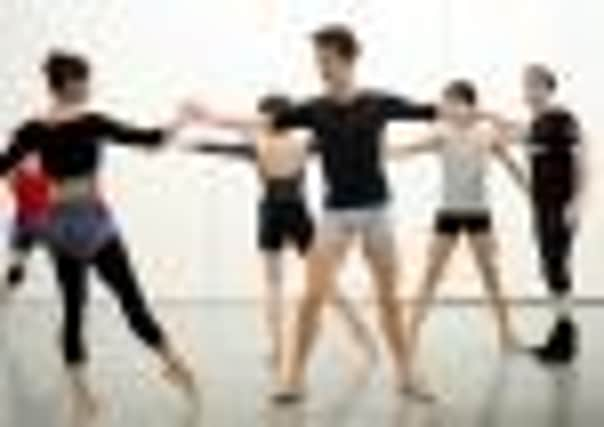Best foot forward for dancer’s debut as choreographer


At the beginning you have a few hints, a piece of music or perhaps a dancer in mind, but it takes focus to bring all the other elements together. Plus, one wrong move and at the last minute the whole thing can end in utter confusion.
Tindall is a newcomer to choreography. A dancer at Northern Ballet he was asked to devise a piece as part of a series of student workshops. Project #1 impressed tutors so much that he was asked to develop it as part of the company’s next show Perpetual Motion. Tindall was as much daunted as he was flattered.
Advertisement
Hide AdAdvertisement
Hide Ad“I almost didn’t do the original workshops,” he says. “It was the end of term, I was tired, but David Nixon (Northern Ballet’s artistic director) persuaded me to give it a go. It’s been eye-opening. As a dancer you tend to look after yourself, but as a choreographer you’re in a room with everyone waiting for instruction. The first time I took a rehearsal I did wonder whether they’d even listen to me, but you gradually find your voice.”
Tindall cast his three dancers on the strength of their individual talents – Tobias Batley was chosen for his flexibility, Ben Mitchell for his feet and Victoria Sibson can “do things with her ribcage which shouldn’t be biologically possible.”
However, it was while watching Martin Scorsese’s Shutter Island, which features the haunting Dinah Washington track, This Bitter Earth, that a crucial piece of the jigsaw fell into place.
“I knew immediately that I didn’t want traditional classical ballet music,” he says. “I know some people find that alienating and I wanted music which had a more universal appeal. By sheer chance I happened to watch Shutter Island and that’s when I had my Eureka moment. This Bitter Earth uses the orchestra, it’s got Washington’s wonderful soul voice and it’s impossible to listen to it without feeling emotion. It’s perfect.”
Advertisement
Hide AdAdvertisement
Hide AdFor the extended version of Project #1, Tindall has added two other pieces of music, but the theme has remained much the same.
“Its focus is movement,” he says. “It’s about the DNA imprint we all leave behind and shows how simultaneously we are identical yet radically different.
“Traditional ballet tends to revolve around the symmetry of the dancers, but I wanted to break with that convention. I wanted to give the audience something more interesting to look at on stage.”
At the same time as working on Project #1, Tindall has also been juggling rehearsals for both Madame Butterfly and his own role in another Perpetual Motion piece.
Advertisement
Hide AdAdvertisement
Hide Ad“It has definitely made me dance differently; I am much more aware of a piece as a whole,” he says. “However, I also know that when it comes to opening night I will be much more nervous about Project #1 than I have ever been as a dancer.
“Because I’m performing in another piece I will be back stage rather than in the auditorium and I suspect that’s probably a good thing. When the music starts, the dancers are on their own and there’s nothing you can do as a choreographer except keep your fingers crossed.”
Perpetual Motion, Stanley and Audrey Burton Theatre, Northern Ballet, Leeds, from February 9 to 18. 0113 220 8000, www.northernballet.com